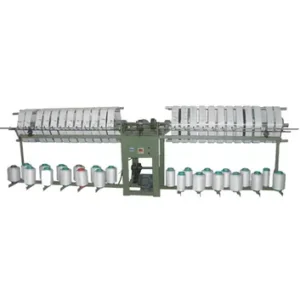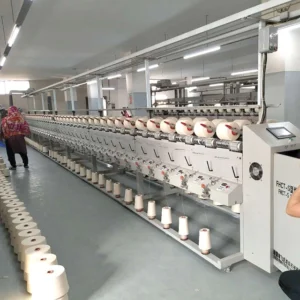Sustainability is no longer optional in textile manufacturing—it’s a necessity.
As consumer demand for eco-friendly products grows and regulations tighten, companies must ensure their workforce is well-trained in sustainable practices.
Effective staff training can lead to reduced waste, lower energy consumption, and improved compliance with environmental standards.
This guide explores practical steps to educate and empower your team to embrace sustainability at every stage of production.
Why Is Sustainability Training Essential for Textile Staff?
Meeting Industry Regulations
As governments and various certification bodies implement increasingly stringent environmental standards, textile companies must ensure their operations comply with these regulations.
Sustainability training equips staff with the knowledge necessary to understand these regulations, thereby reducing the risk of costly fines or damage to the company’s reputation.
By fostering a culture of compliance, organizations can navigate the complex landscape of environmental laws more effectively, ultimately safeguarding their business from legal repercussions.
Reducing Operational Costs
Embracing sustainable practices can significantly lower operational costs by reducing energy consumption, water usage, and material waste.
Training staff in these practices not only enhances their awareness of resource management but also empowers them to identify areas where improvements can be made.
For instance, optimizing machinery settings or implementing water-saving techniques can lead to substantial savings, improving overall profitability while also contributing to environmental sustainability.
Enhancing Brand Reputation
A knowledgeable and well-trained workforce can serve as a powerful asset in positioning a company as a leader in eco-conscious manufacturing.
By adopting sustainable practices and communicating these efforts effectively, businesses can attract environmentally aware customers who prioritize sustainability in their purchasing decisions.
Training programs that emphasize the importance of sustainability can help employees understand their role in enhancing the brand’s reputation, fostering a sense of pride and commitment to the company’s eco-friendly initiatives.
And More:
- The Role of Robotics in Achieving Green Textile Production
- How to Achieve Zero-Waste Production in Textile Factories
- How to Conduct a Carbon Footprint Audit for Textile Factories
What Are the Key Areas of Sustainable Training?
Waste Reduction Techniques
Training employees on effective waste reduction techniques is crucial for minimizing the environmental impact of textile production.
This includes teaching proper fabric cutting methods to reduce scraps, encouraging recycling of leftover materials, and promoting strategies to minimize excess material usage.
By instilling these practices, companies can significantly decrease waste sent to landfills, contributing to a more sustainable production process.
Energy and Water Efficiency
Educating staff on energy and water efficiency is essential for optimizing manufacturing processes.
Training should focus on how to maximize the use of machinery, reduce idle time, and implement water-saving dyeing processes.
By understanding the importance of conserving these resources, employees can play a key role in enhancing operational efficiency, ultimately benefiting both the environment and the company’s bottom line.
Chemical Management
Proper chemical management is critical in minimizing the environmental harm associated with dyes and finishing agents used in textile production.
Training programs should cover safe handling, storage, and disposal practices for these substances.
By equipping staff with knowledge about the potential dangers and environmental impacts of chemicals, companies can ensure safer workplaces and contribute to a healthier ecosystem.
How Should Training Programs Be Structured?
Hands-On Workshops
Interactive, hands-on workshops are an effective way to engage employees in sustainability training.
These sessions allow staff to practice sustainable techniques in real-world scenarios, fostering a deeper understanding of their application.
By participating in workshops, employees can experiment with new methods and receive immediate feedback, enhancing their skills and confidence in implementing sustainable practices.
Digital Learning Modules
Incorporating digital learning modules into training programs provides flexibility and scalability for large workforces.
E-learning platforms can accommodate diverse learning styles and allow employees to access training materials at their convenience.
This approach not only saves time but also ensures that all staff members have the opportunity to participate in sustainability training, regardless of their location or work schedule.
Certification Programs
Offering recognized sustainability certifications can motivate employees to engage with training programs actively.
These certifications validate their skills and knowledge, enhancing their professional development and career prospects.
By establishing clear pathways for certification, companies can incentivize staff to commit to sustainable practices, fostering a culture of continuous improvement in environmental stewardship.
Also Read:
- Application of Automation Equipment in Multi-Shift Production
- 7 Benefits of Buying CNC Winding Machines from China
Who Should Be Involved in Sustainability Training?
Production Line Workers
Production line workers are the backbone of any textile manufacturing process, and they require practical knowledge of waste reduction techniques and efficient resource use to make a significant impact.
Training these frontline staff ensures they understand the importance of minimizing waste during production, optimizing machine settings, and using materials efficiently.
By equipping workers with the skills to implement sustainable practices daily, companies can create a culture of sustainability that permeates every level of the organization.
Supervisors and Managers
Supervisors and managers play a crucial role in enforcing sustainability initiatives and tracking progress through key performance indicators (KPIs).
These leaders must be well-versed in sustainability practices to guide their teams effectively.
Training should focus on how to set clear sustainability goals, monitor performance, and motivate staff to adhere to best practices.
By fostering a leadership team that prioritizes sustainability, companies can create a supportive environment where eco-friendly practices thrive.
Design and R&D Teams
Design and research and development (R&D) teams are essential in creating innovative solutions for eco-friendly fabrics and processes.
Training for these groups should emphasize sustainable design principles, such as selecting renewable materials and developing energy-efficient production methods.
By integrating sustainability into the design phase, companies can ensure that environmentally friendly practices are considered from the outset, ultimately leading to more sustainable products and processes.
What Teaching Methods Work Best?
On-the-Job Training
On-the-job training is an effective method for instilling sustainable habits among employees.
Pairing new hires with experienced mentors allows them to observe and practice sustainable techniques in real-time.
This hands-on approach not only accelerates learning but also fosters a sense of teamwork and accountability.
Mentorship can significantly enhance the transfer of knowledge, ensuring that sustainable practices are consistently applied on the production floor.
Gamification and Incentives
Incorporating gamification into sustainability training can boost employee engagement and motivation.
By creating friendly competitions or rewarding teams for meeting sustainability goals, companies can foster a dynamic and enthusiastic approach to sustainability initiatives.
Incentives, such as recognition programs or bonuses for achieving specific targets, can further encourage staff to actively participate in sustainability efforts, making the process both fun and rewarding.
Regular Refresher Courses
Given that sustainability practices and regulations evolve, it’s essential to provide regular refresher courses to keep staff updated on the latest best practices and innovations.
These courses can help reinforce previous training and introduce new concepts, ensuring that employees remain informed and engaged.
By committing to ongoing education, companies can adapt to changes in the sustainability landscape and continuously improve their practices.
How Can You Measure Training Effectiveness?
Waste and Energy Audits
Conducting waste and energy audits is a practical way to measure the effectiveness of sustainability training.
By tracking reductions in material waste and utility consumption after training sessions, companies can assess the direct impact of their initiatives.
These audits provide quantitative data that can help identify areas for further improvement and validate the success of training efforts.
Employee Feedback Surveys
Gathering insights through employee feedback surveys is crucial for understanding which training methods resonate most with staff.
Surveys can capture employees’ experiences, perceptions, and suggestions regarding the training programs.
This information is invaluable for refining training approaches, ensuring they are engaging and relevant to the workforce’s needs.
Compliance Monitoring
Regular compliance monitoring ensures that sustainability protocols are being adhered to throughout the organization.
By conducting periodic checks and assessments, companies can evaluate how well employees are following established practices.
This monitoring not only helps maintain high standards of sustainability but also reinforces the importance of compliance among staff, encouraging a culture of accountability.
And More:
- The Impact of Automation on Reducing Carbon Emissions in Textile Factories
- How to Achieve Zero-Waste Production in Textile Factories
What Challenges Might You Face?
Resistance to Change
Implementing new sustainable processes often meets resistance from employees who are accustomed to established practices.
This resistance can stem from fear of the unknown, concerns about increased workloads, or skepticism about the effectiveness of new methods.
To address these concerns, it’s essential to engage in clear and open communication.
Providing thorough explanations of the benefits of sustainability, offering support during the transition, and actively involving employees in the change process can help mitigate resistance.
Creating a feedback loop where employees can voice their concerns and suggestions will also foster a more accepting environment.
Language and Literacy Barriers
In diverse workplaces, language and literacy barriers can hinder understanding and engagement in sustainability training. To ensure inclusivity, it’s crucial to use visual aids, diagrams, and videos that convey key concepts without relying solely on text. Additionally, providing multilingual training materials can make the content accessible to all employees. This approach not only enhances comprehension but also demonstrates a commitment to inclusivity, making everyone feel valued and empowered to participate in sustainability efforts.
Budget Constraints
Budget limitations can pose a significant challenge in implementing sustainability training programs.
Organizations may struggle to allocate funds for comprehensive training initiatives. To navigate this, start with low-cost training methods such as in-house workshops, online modules, or peer-led sessions.
As employees adopt sustainable practices and begin to realize cost savings in operations, these savings can then be reinvested into more extensive training programs.
This phased approach allows companies to build a culture of sustainability without overextending their financial resources.
How Can You Sustain Long-Term Engagement?
Leadership Commitment
When executives and upper management demonstrate a genuine commitment to sustainability, it sets a powerful example for the entire organization.
Leaders who actively champion sustainability initiatives—by participating in training, promoting eco-friendly practices, and integrating sustainability into the company’s core values—can inspire employees to take these efforts seriously.
This top-down commitment creates a culture where sustainability is prioritized, encouraging staff to engage with and invest in these initiatives.
Continuous Improvement Culture
Fostering a culture of continuous improvement encourages employees to actively suggest eco-friendly innovations and improvements.
Creating platforms where staff can share their ideas—such as suggestion boxes or innovation workshops—can lead to valuable insights and initiatives.
Recognizing and rewarding successful ideas not only motivates employees but also reinforces the idea that their contributions are essential to the company’s sustainability goals.
This participatory approach fosters a sense of ownership and accountability among the workforce.
Transparent Reporting
Regularly sharing progress on sustainability goals helps maintain motivation and accountability within the team.
By providing updates on achievements, challenges, and future targets, companies can create a sense of shared purpose.
Transparency in reporting allows employees to see the tangible outcomes of their efforts, reinforcing the importance of their contributions.
This practice builds trust and keeps the momentum going, encouraging teams to stay engaged and focused on sustainability initiatives.
Conclusion
Training staff in sustainable textile manufacturing is an investment that pays off in cost savings, regulatory compliance, and brand reputation.
By implementing structured, engaging training programs, companies can foster a culture of environmental responsibility at every level.
The key to success lies in continuous education, measurable goals, and leadership support.
As sustainability becomes a competitive advantage, businesses that prioritize workforce training will lead the industry toward a greener future.
Start small, track progress, and watch your team transform into sustainability champions—one responsible practice at a time.












